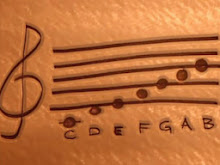An electric violin is a violin equipped with an electronic output of its sound. The term most properly refers to an instrument purposely made to be electrified with built-in pickups, usually with a solid body. It can also refer to a violin fitted with an electric pickup of some type, although "amplified violin" or "electro-acoustic violin" are more accurate in that case.
 Electrically amplified violins have been used in one form or another since the 1920s; jazz and blues artist Stuff Smith is generally credited as being one of the first performers to adapt pickups and amplifiers to violins. The Electro Stringed Instrument Corporation, National and Vega sold electric violins in the 1930s and 1940s; Fender produced a small number of electric violins in the late 1950s. There has been a great deal more commercial success of well known manufacturers of electric violins since the 1990s for both well known, established companies and new makers too.
Electrically amplified violins have been used in one form or another since the 1920s; jazz and blues artist Stuff Smith is generally credited as being one of the first performers to adapt pickups and amplifiers to violins. The Electro Stringed Instrument Corporation, National and Vega sold electric violins in the 1930s and 1940s; Fender produced a small number of electric violins in the late 1950s. There has been a great deal more commercial success of well known manufacturers of electric violins since the 1990s for both well known, established companies and new makers too.
Acoustic violins may be used with an add-on piezoelectric bridge or body pickup, or a magnetic pickup attached to the fingerboard end. Alternatively, an electrodynamic pickup can be installed under an acoustic violin's fingerboard avoiding interference with any tone-producing parts of the violin, and so keeping its acoustic resonances and tone intact.[1]
To avoid feedback from the resonances of the hollow body under high amplification on stage, many instruments have a solid body instead. The timbre (tone color) of a standard unamplified violin is due in large part to these resonances, however, so depending on how the signal is picked up, an electric violin may have a "rawer" or "sharper" sound than an acoustic instrument. This raw sound is often preferred in rock, pop, and some avant-garde genres. Several "semi-hollow" designs exist, containing a sealed but hollow resonating chamber that provides some approximation of acoustic violin sound while reducing susceptibility to feedback.
Solid-body electric violins typically have a non-traditional, minimalistic design to keep weight down. Lately, materials such as kevlar, glass and carbon fibres, are used in the build process.
They are often seen as "experimental" instruments, being less established than electric guitar or bass. Hence, there are many variations on the standard design, such as frets, extra strings, machine heads, "baritone" strings that sound an octave lower than normal, and sympathetic strings. Luthier Yuri Landman built a 12 string electric violin for the Belgian band DAAU. The strings on this instrument are clustered in four groups of three strings tuned unison creating a chorus. Also the instrument features an extra pickup in the tail piece for extra amplification of string resonances.
Acoustic 5-string violins are becoming more common, and it is not unusual for an electric violin to have 5, 6, 7 or more strings. The typical solid body also accommodates the extra tension caused by more strings without stressing the instrument too much. The extra strings are usually a low C string for 5-strings, a low C and low F for 6, and a low C, F and B♭ for 7.
Electric violin signals usually pass through electronic processing, in the same way as an electric guitar, to achieve a desired sound. This could include delay, reverb, chorus, distortion, or other effects.
Today electric violins are even being utilized to reinvigorate music education. NBC, for example, recently featured a "music camp that combines rock and orchestra" by Mark Wood, who was chosen as the "person of the day" and featured on the Today show for bringing fresh interest to music education with rock performances all on electric violins where proceeds are donated back to school music programs. The Today show stated "The perfect blend of classical instruments and rock and roll is giving kids across the country a whole new appreciation for music."


